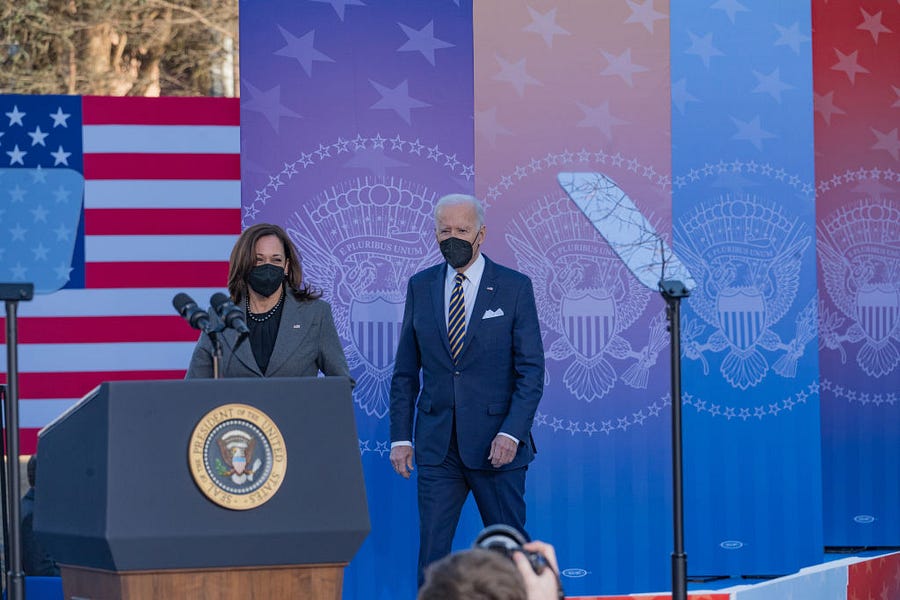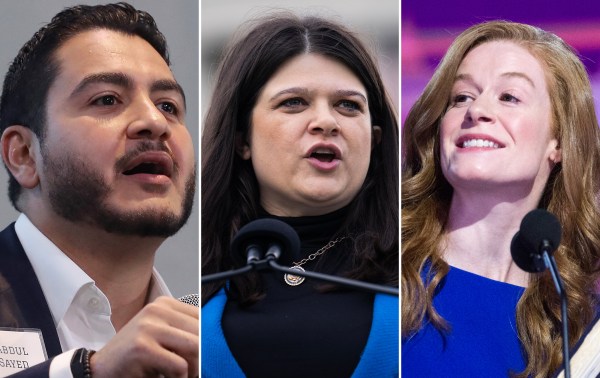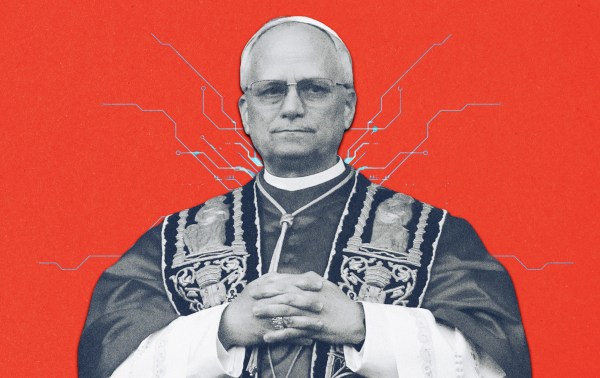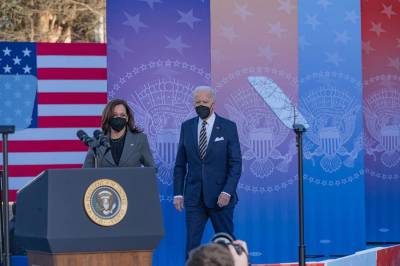Even by the standards of today’s bitterly divided and partisan Washington, President Biden’s speech in support of the proposed John Lewis Voting Rights Act, or more accurately his lambasting of Republicans as modern-day Bull Connors, George Wallaces, and Jefferson Davises for opposing it, has become a flashpoint. After all, the president proclaimed, the Voting Rights Act was “extended” in 2006, and a good number of Republicans in today’s Senate were part of the unanimous vote for it back then. Doesn’t this show that the Republicans have abandoned a previous bipartisan consensus on voting rights?
Well, no. Mitt Romney is not George Wallace. But a bit of history and explanation is in order to explain what the Voting Rights Act does and doesn’t do and why merely inserting the words “voting rights” and “John Lewis” into the title of a bill does not make opposing it a moral failing.
The Voting Rights Act of 1965 was an important, perhaps the most important, law passed during the civil rights era. Virtually no one disputes this, because we are all familiar with the history of the efforts, particularly but not exclusively in the South, to keep blacks from exercising their right to vote that precipitated the law’s passage. These efforts began shortly after the passage of the Civil War era amendments (the 13th, 14th, and 15th) and historically took many forms. Black voters were subject to violence and intimidation. States and localities implemented voter registration requirements that were nominally “race neutral” but would in practice apply only to blacks or former slaves. These included literacy tests or other tests of picayune knowledge, with a convenient—for whites—exemption for people whose grandfathers could vote before the Civil War (the origin of the term “grandfather clause,” by the way), and other creative practices designed to suppress black voter registration.
The pre-Voting Rights Act state of affairs was thus a true example of “voter suppression” in a way that would be unimaginable today. Prior to the passage of the Voting Rights Act, only 23 percent of voting age blacks in America were registered to vote. By 1969, 61 percent were, making the Voting Rights Act probably the most successful piece of civil rights legislation ever.
The Voting Rights Act’s provisions can be roughly divided into two categories, the “general provisions” and the “special provisions.” Section 2 is the core of the general provisions, and it prohibits state or local government from adopting laws that discriminate against minority voters. Section 2 was eventually amended to make clear that laws that result in discrimination, as well as those that are intentionally discriminatory, are prohibited. Section 2 cases generally fall into two categories: (1) “vote dilution” cases, for where district lines are drawn to thwart minority voting power ( think of an electoral map for a state with 1 million residents, one -third of whom are black and concentrated in an urban area, and three congressional districts, where a state draws all three districts in a way to carve up the urban district to prevent any one district from having sufficient black voting strength to elect a candidate of their choice) and (2) vote denial cases, where processes or procedures effectively deny minority voters an equal right to vote. Private citizens as well as the government can bring suit to enforce these provisions. As one might imagine, there is a complex body of law developed around the appropriate standards to apply to Section 2 challenges. Other general provisions prohibit “tests or devices,” such as literacy tests, and poll taxes (the 24th Amendment had barred poll taxes for federal elections, but not state and local elections), prohibitions on intimidation, harassment, and eventually, by amendment, prohibitions of discrimination against non-English speakers.
Here is the thing about the general provisions of the Voting Rights Act: They are permanent. They do not expire. They need not be “renewed.” They exist today. They will exist tomorrow. And they constitute what most of us think of as the core protections of the Voting Rights Act. They are not threatened by anything Republicans have done or will do.
However, the Voting Rights Act also contained “special provisions” that applied only to certain states and jurisdiction and were designed to do so only temporarily, as they contained a sunset clause terminating the provisions in five years. These are the so-called “preclearance” provisions of the Voting Rights Act. They were adopted in 1965 to address recalcitrant states that, in response to lawsuits enforcing voting rights, would pass a different discriminatory law and force a new lawsuit. For example, imagine a poll tax is struck down and replaced with a literacy test, necessitating new litigation. This made voting rights enforcement akin to game of “whack a mole,” with the federal government always behind the curve in stamping out new discriminatory laws. Thus Section 5 of the Voting Rights Act was designed to “freeze” the voting practices and procedures in place in these jurisdictions to prevent continued litigation. So-called “covered jurisdictions” had to submit any proposed changes to voting practices (from redistricting maps and changes in voting procedure to any change in polling location for a local election) to the Department of Justice Civil Rights Division for approval. A state or jurisdiction can file suit to “bail out” of coverage in certain circumstance and there is a provision to use federal litigation to “bail in” a state that is not covered if it has a repeated history of discrimination.
So who was “covered”? The Voting Rights Act originally contained a formula that related to voter registration statistics for minority voters, use of literacy tests, and total registration percentages for the 1964 presidential election. The map of “covered jurisdictions” covered nine states in full, and portions of others. The formula was amended to add states that provided voting materials only in English in 1975. The coverage formula provided some seemingly bizarre results. For example, most would not be surprised that Alabama (where, for example, only 6 percent of voting age blacks were registered to vote prior to the Voting Rights Act) and Georgia were covered, but why only portions of North Carolina, none of Kentucky, and part of New Hampshire and California?
Over decades, Section 5’s sunset date was repeatedly extended (1970, 1975, 1982, and for the last time in 2006), but the “coverage formula” was never updated after 1975, and these covered jurisdictions submitted every proposed voting change to DOJ, which could accept or reject them, resulting in litigation on large issues (South Carolina voter ID law or statewide congressional maps) and usual acquiescence on small matter (change of polling place for the school board election).
In the 2013 Shelby County case, the Supreme Court found the coverage formula and map in the Voting Rights Act was so outdated that it failed to justify the significant federal intrusion into the ability of some states and local jurisdictions to run their own elections. Congress has the ability to update the coverage map or coverage formula with new data, but has not done so. As Chief Justice John Roberts pointed out, Georgia today has higher black voter registration and turnout rates than many northern (and non-covered) states, and the court’s majority found that using outdated data to justify remedial federal intrusion years later was unconstitutional.
To level-set where things stand now: Discriminatory voting laws are still illegal under the Voting Rights Act. Lawsuits can be brought by the government or private parties to combat discriminatory laws. All that changed with Shelby County was that, in the “covered jurisdictions,” a challenged law remains in place until struck down or enjoined by a federal court after hearing evidence, instead of going into effect only when “precleared” by DOJ. To put it succinctly, to strike down a voting law, you must prove your case in court – just as is the case with any other law.
The John Lewis Voting Rights Act seeks to resurrect this “preclearance” process and dictate “covered jurisdictions” not by voter registration or turnout numbers but by the number of “violations” of voting rights over time, counting any consent decrees, settlements, and other court enforced resolution against a state or jurisdiction. Of course, the Justice Department had, and will have, a heavy hand in influencing which jurisdictions get sued and rack up the requisite numbers to be “covered.” One only needs to consider that the Biden DOJ sued Georgia for changes to its generous early voting standards (as the Obama DOJ did with North Carolina) while ignoring Democratic states (New York among them) that have far fewer early voting opportunities to see what a rigged game this could become when partisan operators at the Justice Department can sue to put states it doesn’t agree with politically under federal supervision, with the ability to block any voting law they don’t like without going to court. It also includes provisions that federalize local elections and measures that counter what some view as unfavorable Supreme Court precedent on matters such as vote dilution and vote denial cases.
None of this is to say that there aren’t issues of legitimate debate on whether some federal election law standards makes sense (or are constitutional), or that issues like vote dilution standards aren’t incredibly complex, and that there is not room for vehement disagreement as to how the mechanics of voting rights enforcement should work. But skepticism about or even flat-out opposition to the John Lewis Voting Rights Act is hardly tantamount to opposition to the Voting Rights Act, opposition to civil rights, or being a segregationist.
President Biden was elected to lower the temperature, but it’s unfortunately the case that his comments about Republican opposition to his preferred voting legislation is a slander and beneath him and the office he holds.
Bob Driscoll is a lawyer in Washington, D.C. , co-chair of the Government and Internal Investigations team at McGlinchey, and a former deputy assistant attorney general for the Civil Rights Division of the Department of Justice.






Please note that we at The Dispatch hold ourselves, our work, and our commenters to a higher standard than other places on the internet. We welcome comments that foster genuine debate or discussion—including comments critical of us or our work—but responses that include ad hominem attacks on fellow Dispatch members or are intended to stoke fear and anger may be moderated.
With your membership, you only have the ability to comment on The Morning Dispatch articles. Consider upgrading to join the conversation everywhere.